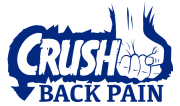Lower back pain after squats is often due to lumbar flexion while in the bottom position of the squat movement
In the bottom position of the squat the lumbar spine often flexes. Flexion of the lumbar spine increases compression and tensile loading through the posterior part of the disc. When load is combined with flexion the compressive and tensile forces are greater.
Now add volume and cyclic loading with multiple reps and sets and lower back pain after squats happens. This can happen with back squats, front squats, dumbbell squats, kettlebell squats, goblet squats, and even bodyweight squats. Repetitive lumbar flexion with load has the potential to exacerbate disc herniations and bulges and can even cause disc pain.
So how do you fix it?
Simple. Don’t flex the lumbar spine while squatting. This may be as simple as not squatting as deep. The deeper you squat the greater chance the lumbar spine is going to flex in the bottom position. And it does not take much flexion to exacerbate the back, it just takes a little bit of flexion repeated with each rep.
Squatting to parallel is deep enough. You can build muscle and strength squatting to parallel.
Unless you’re an olympic lifter you don’t have to squat past parallel. Lots of people will tell you it’s a must to get as deep as you can and work through a full range. This is fine if you have the hip, ankle, and thoracic mobility to do it. And your form is perfect. And it doesn’t bother your lower back.
Most people don’t have perfect squat form, not to mention adequate mobility through their ankles, hips, and mid back
So they flex through the lumbar spine, then get lower back pain after squats. So just squat to parallel and keep the back extended to neutral. With the lower back in an extended to neutral position the lumbar spine, particularly the discs, are better able to tolerate loads. There is less compressive and tensile force through the posterior disc when the lumbar spine is maintained in a neutral to extended position.
You can load the spine while squatting and not get pain if you don’t allow the lower back to flex during squat reps
Improving hip flexion and ankle dorsiflexion mobility will also allow you to squat through a greater range without excessive lumbar flexion.
Ways to improve hip flexion and ankle dorsiflexion are covered in another video. Take home message, don’t allow the lumbar spine to flex at all while squatting. This is a simple and effective way to eliminate lower back pain after squats.


